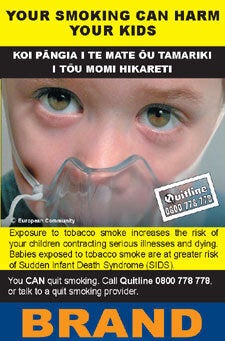
In an effort to reduce tobacco consumption, the Canadian government is considering the adoption of plain packaging requirements for tobacco products because it was supposed to be effective in Australia. Reducing smoking rates and preventing youth access to tobacco is a goal with widespread support, including from Canada's convenience store retailers.
However, a closer look at what occurred in Australia when plain packaging was introduced results in more questions than answers as to how this would meaningfully impact tobacco consumption in Canada.
Tobacco consumption in Canada is at an all-time low, thanks in no small part to the work of convenience stores in providing controlled, regulated sale of these products across the country. Our retailers follow Canada's tobacco control measures and act as gatekeepers to age-restricted products such as tobacco, lottery and alcohol -- and this is a responsibility that we take very seriously.
At home, Canada already has a variety of measures designed to help control the sale and reduce the consumption of tobacco, especially among youth. For example, all tobacco products sold in Canada must be kept behind display flaps so they cannot be viewed by consumers (especially youth); it is illegal for these products to be advertised or marketed in our stores; graphic warning labels that depict the dangers of tobacco consumption for buyers make up 75 per cent of existing tobacco packaging space; consumers are asked for proof of age when purchasing cigarettes; and finally, tobacco products have been heavily taxed in Canada as a means to encourage reduced consumption.
All of these requirements are complemented by intensive training on age-testing and product handling for convenience store staff.
Advocates for plain packaging in Canada suggest that these measures are not enough, and that eliminating the already limited branding of cigarettes (the remaining 25 per cent of a package) will further curb tobacco use in Canada. Evidence from Australia -- the only other country in the world to implement plain packaging -- suggests otherwise.
Australian customers also began openly asking retailers where they could purchase cheaper tobacco, including from illegal sources.
Our retail counterparts in Australia describe the post-plain packaging era as a race to the bottom. After this measure was introduced, customers began purchasing and consuming cheaper cigarettes in higher quantities, with reports indicating an increase of as much as 50 per cent in these products. Australian customers also began openly asking retailers where they could purchase cheaper tobacco, including from illegal sources.
This demand was met by a burgeoning contraband market and according to a study from KPMG -- consumption of illicit tobacco products in Australia went from 11.5 per cent in 2012 to 14.3 per cent in June 2014.
In assessing the effectiveness of this Australian policy for Canada, one also needs to consider the fact that measures such as display bans were introduced in Australia only a couple of years prior to plain packaging, making it difficult to evaluate their solitary effectiveness in reducing tobacco consumption (display bans have been around in Canada since 2003).
Meanwhile, other measures including graphic warning labels (such as those in Canada) were not present on tobacco products in Australia to the extent they are in Canada prior to plain packaging (graphic warning labels in Australia occupied only 33.33 per cent of packages before plain packaging regulation was introduced).
Even so, the restrictions implemented in Australia have resulted in no meaningful decrease in already downwardly trending tobacco consumption rates -- and virtually no impact whatsoever in youth consumption rates in particular. Can Canada expect plain packaging regulation to offer any real improvements to smoking rates? The answer is that it is highly unlikely.
In light of the Canadian government's value of evidence-based decision-making, we should strongly consider the real evidence coming from Australia in evaluating the efficacy of this policy. Canada is not Australia. We need a solution that is tailored for us -- not a blind adoption of another country's ineffective policy.
Follow HuffPost Canada Blogs on Facebook
MORE ON HUFFPOST:
